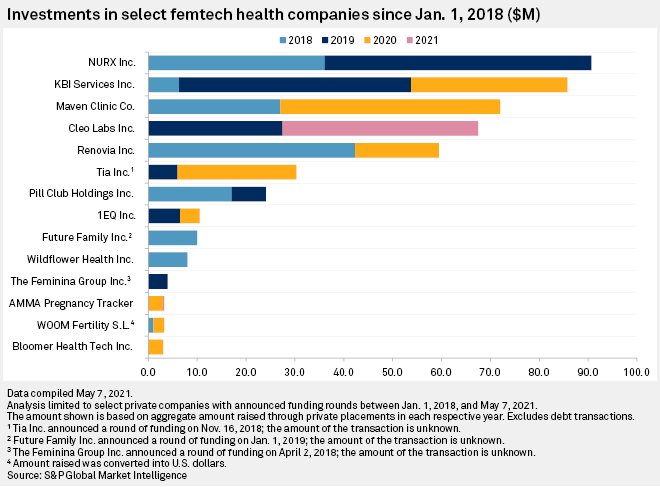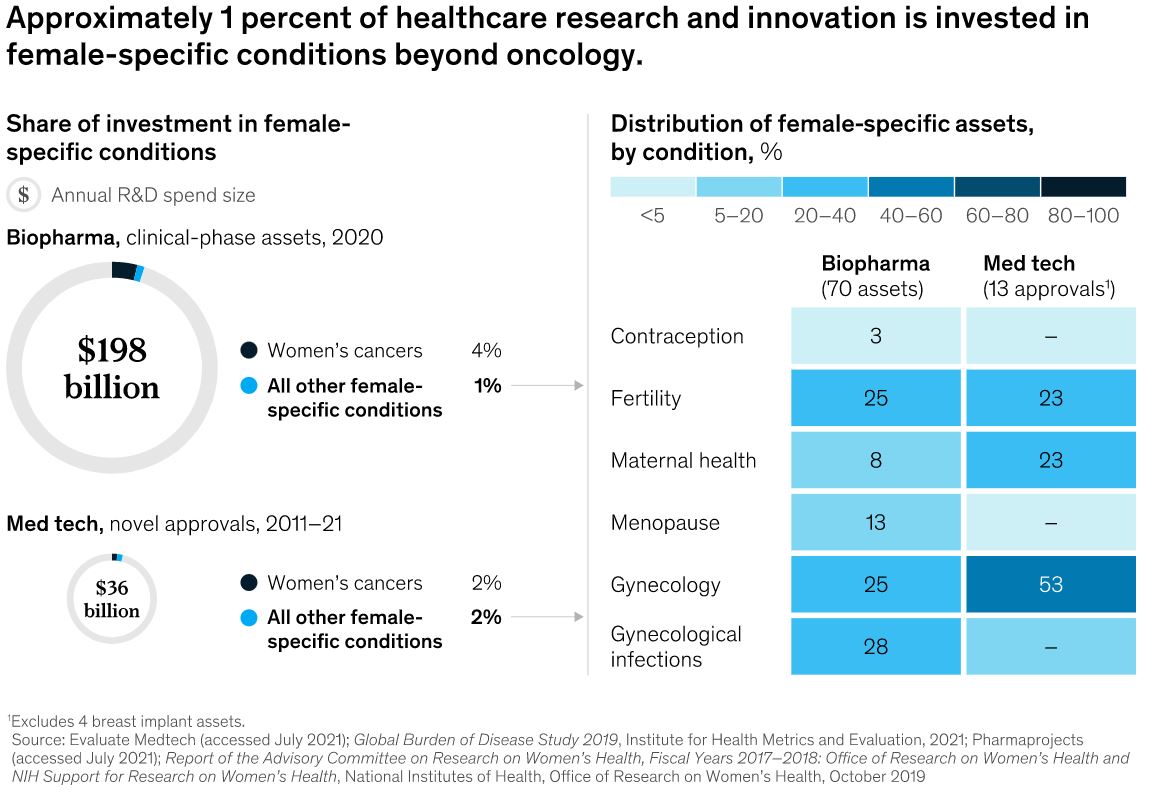Today, an entire field of study is gaining traction in the technological environment focusing mainly on women’s health and wellness. This is Femtech or Female Technology, a term applied to a set of tools and technologies that focus on female healthcare.
A report by Frost and Sullivan states that the Femtech industry is expected to reach a combined market value of more than $50 billion by 2025.
Ida Tin explains, in a recent article, how companies like Clue can bring a change in the present and future technology environment:
“This will be a massive category. It’s growing faster every day. I believe venture capitalists will list Femtech as one of their areas of interest. There will be femtech conferences. Femtech will not be a term referring to “women in technology” but rather as an expanding category of technology that serves the vast opportunities that exist for female health.”
What is Femtech?
Digital women’s health as an entirely new industry is a relatively recent idea.
Femtech is a sector that primarily includes any digital or conventional health aids intended for women’s health, such as wearables, mobile apps, internet-connected medical devices, hygiene products, and others.
Menstruation tracking apps are the first type of practical application of Femtech-related services, but their scope is expected to grow beyond this in the coming years.
Multinational healthcare companies invest millions of dollars in research to develop cutting-edge technologies focused on women’s health. These corporations are working to manage and solve women’s medical problems like breast cancer, cervical cancer, Polycystic ovary syndrome (PCOS), and many fertility-related issues. As a result, Femtech companies are attracting massive investments from investors across the globe.
An article by S&P Global points out that American Femtech enterprises raised more than $400 million in funding in 2020. The below figure shows the amount of funding received by the most prominent Femtech companies from 2018 to 2021.

Source: S&P Global
Implementing Femtech for Healthcare Organizations
Femtech now covers a broader range of health issues in addition to female reproductive health. It can now be used to describe medical technology for ailments including autoimmune illnesses, migraines, breast & ovarian cancer, and cardiovascular disease that impact women differently or disproportionately.
The adoption of Femtech is not just taking place among patients. Many conventional healthcare institutions specializing in bioinformatics are embracing Femtech with brick-and-mortar stores. For instance, Oova is a smartphone app and at-home hormone test combination that creates a unique reproductive strategy based on test findings.
Here are some strategies to implement Femtech in traditional healthcare organizations:
1. Filling The Gaps in Women’s and Non-Binary People’s Healthcare
Femtech offers health systems a singular chance to close treatment gaps, particularly in the intensely stigmatized field of sexual and reproductive health. This covers contraception, family planning, menstruation, menopause, transgender sexual and reproductive health, and STDs.
Community health needs analyses, and consumer surveys are two tools that health systems wishing to make the most of Femtech can use to look at the gaps in their sexual and reproductive health offerings.
Mckinsey conducted a study to find the research areas in women’s health that attract the most investment. It revealed that 4% of investment is focused on women’s cancers like breast and ovarian, while 1% is done on other women-specific health conditions like menstruation, contraception, fertility, and menopause.
The below infographic shows a detailed analysis of the focus areas of investment for research in women’s health:

Source: McKinsey
2. Improving Equity In Healthcare
Despite substantial advancements over the past few decades, there are still notable gaps in the healthcare of women and nonbinary people. Studies showing that over one-third of women report having their concerns disregarded when seeking medical attention and that over a quarter of Black women in the United States report receiving disrespectful maternity care serve as evidence of this.
Additionally, transgender adults are more likely to be uninsured than cisgender ones, with an estimated 10.8 million American women lacking insurance in 2018. Lack of insurance makes it difficult to receive the proper care and may even harm health outcomes. Femtech can increase access to care, foster trust among underprivileged groups, and empower those populations by sharing knowledge and resources.
Plume and Health in her HUE are some Femtech companies striving to remove the disparity in global women’s health. These organizations focus on the healthcare of women of color and transgender people
3. Look for Suitable Femtech Partners To Fill Gaps
Medical systems with fruitful collaborations should recognize mature Femtech startups with goods that cater to their target audiences. We advise healthcare organizations to form partnerships after thoroughly assessing their capabilities and those of their Femtech partners.
The FemTech Collective, CommonSpirit Health, and Maven Clinic are some organizations that are working toward achieving this goal of minimizing gaps in women’s health.
How Is Femtech Transforming Women’s Health And Wellness
It goes without saying that Femtech is an ongoing revolution and is significantly transforming the current scenario surrounding women’s health. Here are some of the ways how Femtech is changing women’s health and wellness industry:
Improving Self-Care
Providing more accessible access to services and options tailored specifically to women gives everyone is one of the primary objectives of Femtech. Delivering reproductive items for at-home use, such as birth control or pregnancy testing, is the main emphasis of many Femtech solutions. Women can track their periods and take control of their entire sexual health with the aid of other alternatives like period and fertility apps.
Broadening The Scope of Healthcare Accessibility
It is widely accepted that healthcare accessibility has been limited to marginalized sections of society, like people of color and the LGBTQ+ community. Femtech companies have made it easier for such communities to get access to healthcare solutions like maternity, general wellness, and affordable care related to women-specific ailments.
Many people claim that discrimination prevents them from following their medical plans or from seeking medical help in the first place. Femtech solutions can provide a secure environment for the LGBTQ+ community to get the services and goods they wouldn’t otherwise be able to. According to experts, investors pass on a great chance to involve the community in their planned market expansion.
Addressing Data Privacy in Women’s Health
As women’s health gets digitized due to the ongoing Femtech revolution, a key concern is protecting the massive amount of patient data. Moreover, after the landmark judgment of the US Supreme Court in the Roe vs. Wade case, the concern for data privacy has massively increased. Hence, Femtech companies specializing in abortion, menstruation, and fertility-related issues have focused on patient data privacy in women’s health.
Reliable data gathering enables accurate diagnostics, better care delivery, and more thorough research, in addition to the overall reduction in care costs. Femtech businesses are working to discover more ways to protect patient data in the face of policy changes.
Femtech is still an evolving domain with newer innovations happening every day that can entirely change the meaning of the term in the coming years. In such situations, having a profound knowledge of Women’s Health and related issues can go a long way in cementing yourself as a noteworthy Femtech company.
Contact Benchpoint, a healthcare IT firm, today to find the best talent in the Femtech space and to learn how you can transform your organization to compete with industry leaders.
